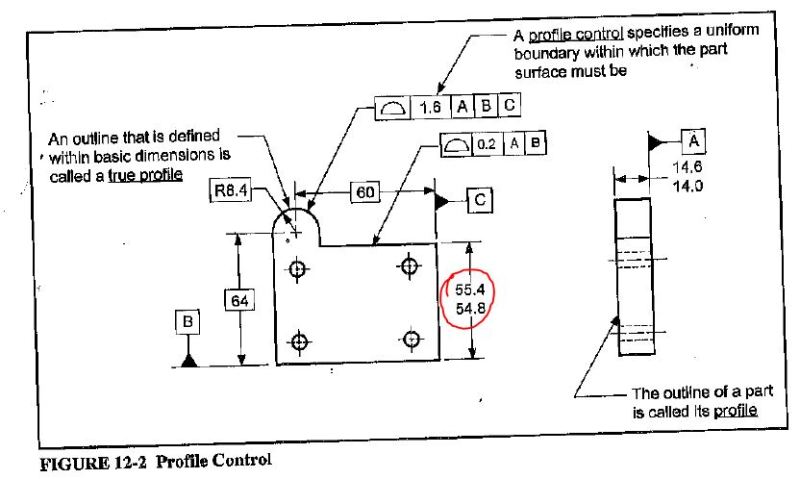Belanger
Automotive
- Oct 5, 2009
- 2,450
Several things have popped up in various threads that always seem to leave this question lingering: When a profile tolerance is applied, is it required for the dimensions defining the shape to be basic?
We all agree that the dimensions defining the location of the feature do not have to be basic (often they are). So please realize that I'm talking about the shape -- such as the radius of a curve: I would say that the radius must be basic if you're going to apply a profile tolerance to such a curve.
See the attached picture for the specific question to be debated. Would you say the two drawings mean exactly the same thing? Or would you say the second drawing does not comply with Y14.5?
John-Paul Belanger
Certified Sr. GD&T Professional
Geometric Learning Systems
We all agree that the dimensions defining the location of the feature do not have to be basic (often they are). So please realize that I'm talking about the shape -- such as the radius of a curve: I would say that the radius must be basic if you're going to apply a profile tolerance to such a curve.
See the attached picture for the specific question to be debated. Would you say the two drawings mean exactly the same thing? Or would you say the second drawing does not comply with Y14.5?
John-Paul Belanger
Certified Sr. GD&T Professional
Geometric Learning Systems

